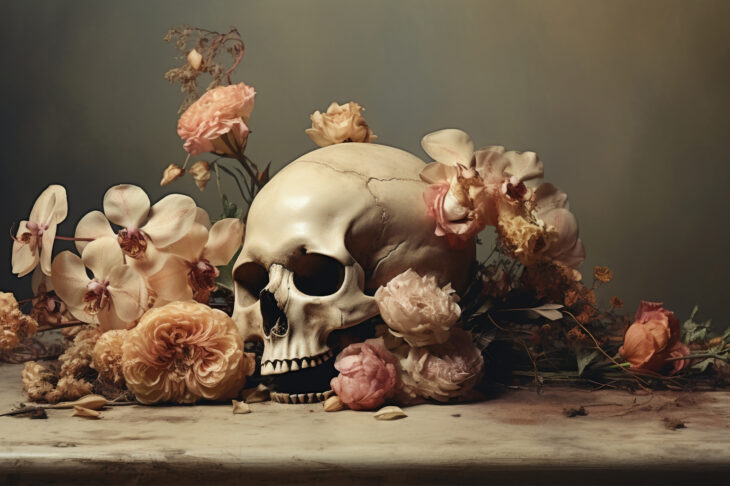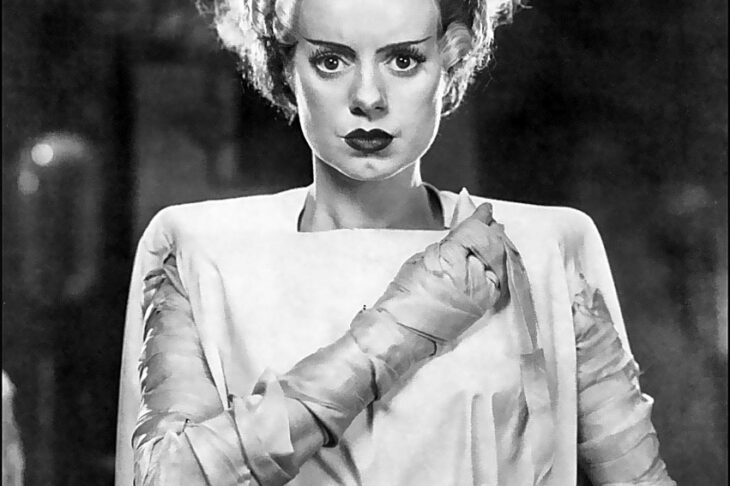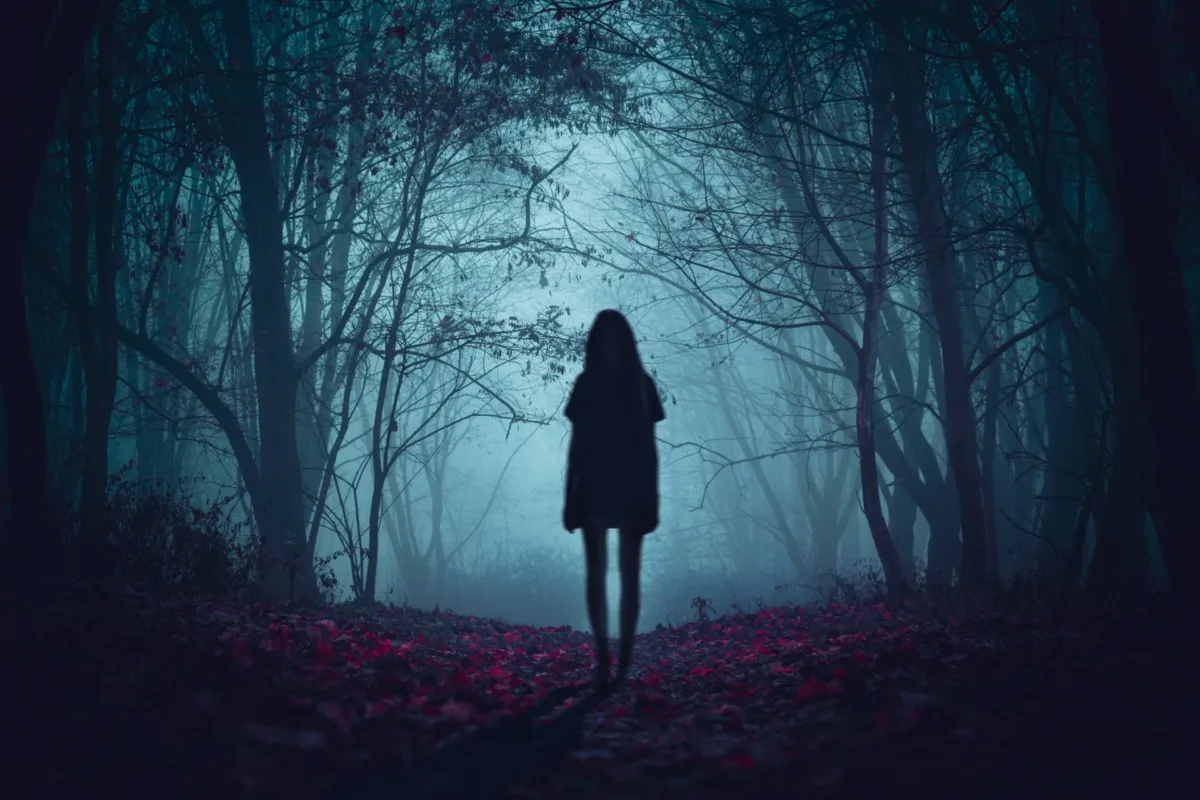
Guide to Writing Horror Fiction Part 1
The Anatomy of Horror Fiction
Writing horror fiction is a thrilling and challenging experience and, with the right tools and techniques, you can create a haunting, visceral or suspenseful story that will live long in the memory of readers. We’re not saying it’s easy, there’ll be plenty of dark moments along the way, but if horror is your thing all you need to do is pick up your pen.
Let’s face it, horror writers tend to be a certain breed of people – more comfortable with the shadows than having fun at the party. Whether you hanker after being a gothic master or a mistress of gore, here’s our guide to getting the basics in place.

Our Top Horror Fiction Writing Tips
- Study the genre: Read as many horror novels and short stories as you can, paying attention to the different elements that make up a great narrative, including suspense, tension, atmosphere, and character development. Focus on the greats and not-so-greats, simply devour it all as much as you can
- Create a concept: Before you start writing, brainstorm ideas for your story and choose a concept that you are passionate about and that is likely to engage your readers. A concept could be something like a remote location or a physical body transformation. Maybe you love vampires but how can you make it different and engaging to what has gone before?
- Develop your characters: Your characters are the heart of your story, so make sure to flesh out their personalities, motivations, and backgrounds. Consider how they will react in different scenarios, and how they will help drive the story forward. The more you know them, the better you’ll be able to write their story and yours.
- Build suspense and tension: To create a truly frightening horror story, you need to build up the tension. This can be done through a variety of techniques, such as foreshadowing, sudden reveals, and gradual increases in the level of fear. Get to know the techniques that are used in modern horror fiction and start experimenting with them. When you read a great horror book, try to figure out how they created the tension and why that works.
- Create atmospheric settings: A creepy, macabre setting is crucial for a horror story. Consider the time, location, and mood of your story and use descriptive language to bring that setting to life. It doesn’t have to be a rickety old house in the middle of nowhere. Some of the best horror stories have embraced city landscapes and ‘normal worlds’.
- Writing from the perspective of your characters: Writing from the perspective of your characters helps you build a deeper connection with your readers and add an extra layer of suspense and tension. It can be limiting, however, so make your choice wisely.
- Write your first draft quickly: Once you’ve got all the ideas in place, write your first draft as much in one go as possible. Don’t stop to edit. Just keep going.
- Revise and edit: Once you have completed your first draft, it’s then time to revise and edit. This may involve cutting unnecessary scenes, tightening up the pacing, and making sure your story flows smoothly. This is where the hard work comes in and learning to be critical is essential in developing a good story into a great one.
- Share with beta readers: Before publishing or submitting your horror story, consider sharing it with beta readers to get feedback and make any necessary revisions. Try to avoid friends and family as they tend to heap on the praise rather than give constructive criticism.
Defining Horror Fiction
Horror fiction is a genre of literature that is designed to scare, unsettle, or terrify its readers through the use of suspense, fear, and the supernatural. It often explores the darker aspects of human nature and the unknown, touching upon our deepest, darkest terrors and anxieties around death, the afterlife, and the unknown.
Horror fiction can take many forms, including short stories, novels, and films, and can range from subtle psychological terror to graphic violence and gore. The genre is characterized by the use of elements such as jump scares, creepy imagery, suspenseful music, and supernatural creatures and phenomena, all of which are used to create a sense of unease in the reader or viewer.
The First Horror Story
It is difficult to determine the exact first horror story ever written, as the genre has evolved and has been present in various forms in different cultures for centuries. However, some of the earliest examples of horror-like tales can be traced back to ancient civilizations, such as the Babylonian and Egyptian mythologies, which featured tales of gods, monsters, and the supernatural.
In Western literature, one of the earliest examples of horror can be found in the works of the Greek poet Homer, particularly “The Odyssey,” which features terrifying creatures such as the cyclops and the sirens. Another early example is the works of the Roman poet Ovid, particularly “Metamorphoses,” which features tales of transformation and the grotesque.
As the genre evolved, horror elements began to appear in gothic literature in the 18th and 19th centuries. One of the first and most influential works in this subgenre is Horace Walpole’s “The Castle of Otranto” (1764), which is widely considered to be the first Gothic novel. The story features elements of terror, mystery, and the supernatural, and is set in a haunted castle filled with dark secrets and evil forces.

Read Horror Fiction to Write Horror Fiction
Reading horror fiction is an important part of the process for those who wish to write in the genre, as it provides a wealth of knowledge and inspiration. Here are a few reasons why reading is so important if you want to be a great horror writer:
- Exposure to different styles and techniques: By reading a variety of horror fiction, writers can get a sense of the different styles and techniques used in the genre. They can learn how different authors create suspense, build tension, and use imagery to scare and unsettle their readers. This knowledge can then be applied to their own writing, helping them to develop their unique voice and style.
- Understanding the genre’s conventions and expectations: Horror fiction has certain conventions and expectations that readers have come to expect. Reading widely in the genre allows writers to understand these and use them to their advantage in their own writing, even sometimes subverting them to come up with something new.
- Inspiration for new ideas: Horror fiction is a genre that is constantly evolving and changing, with new ideas and concepts being explored all the time. By reading a variety of horror fiction, writers can be inspired by new developments and can incorporate these into their own writing.
- Improved writing skills: Finally, reading is simply an important part of becoming a better writer. By reading a wide variety of fiction, including stuff outside of horror fiction, writers can improve their writing skills, learn new techniques, and develop their voice and style.
Read our post on the horror greats to read if you want to master the art of macabre.
How to Read Critically Aka Finding Out What Works
Yes, reading fiction critically can be an important part of learning how to write novels and stories but you need to do it critically if you want to improve.
- Pay attention to structure: When reading fiction, analyse the way the story is structured, including the narrative arc, the pacing, and the use of flashbacks and other tools that writers use. Consider how the structure contributes to the overall impact of the story and draws you in.
- Analyze the characters: Pay close attention to the characters in the story, including their motivations, desires, and flaws. Consider how the characters are developed and how they drive the action of the story. What can you tell about them from their actions? Is there much backstory or is it implied? In essence, dig beneath the surface.
- Look at the themes: Consider the themes that the author is exploring in the story. Are they universal themes, or do they reflect the author’s own experiences and perspectives? How are the themes explored and developed throughout the story?
- Consider the writing style: Think about the author’s writing style, including their use of language, tone, and point of view. How does the author’s style contribute to the impact of the story? How does it differ from other writers?
- Analyze the setting: Consider the role that the setting plays in the story. How does it contribute to the atmosphere and mood of the story? How does it contribute to the themes and the development of the characters?
- Consider the author’s intent: Thinks about what the author is trying to communicate through the story. Are they trying to make a statement or convey a particular message? How does the author’s intent impact the story and its impact on the reader?
- Keep a journal or take notes: As you read, keep a journal or take notes on what you observe and what you find interesting or impactful about the story. This will help you to better understand the story and to remember what you’ve learned.

Writing For Yourself or Writing For an Audience
As a writer, it’s important to strike a balance between writing for yourself and writing for your audience. Here are a few things to consider when making this decision:
- Know your audience: It’s important to understand who your target audience is, as this will inform the themes, characters, and style of your writing. Consider the age range, interests, and expectations of your readers.
- Write what you love: Writing should be a passion, and if you enjoy writing about certain topics or in certain styles, it will show in your work. Writing what you love will help you stay motivated and avoid burnout.
- Be open to feedback: Whether you are writing for yourself or a specific audience, it’s important to be open to feedback and willing to make revisions. This can help you improve your writing and make your work more appealing to your readers.
Ultimately, the most successful writers are those who strike a balance between writing what they love and writing what their audience wants. By being open to feedback and willing to make revisions, you can find this balance and create stories that both you and your readers will love. Alternatively, you could just say ‘to hell with the world’ and write what you want.
Plotting vs Pantsing for Horror Writers
Plotting and pantsing are two popular approaches to writing a novel, each with its own unique strengths and weaknesses. Find a writer’s group online and you’ll find it fairly heavily discussed.
Plotting refers to the process of planning out a story in advance, often with detailed outlines and character arcs. This approach can help provide a clear direction and structure for the story, which is especially important for writers who struggle with getting started or who tend to get sidetracked.
On the other hand, pantsing, also known as “writing by the seat of your pants,” refers to the process of starting a story without any pre-planning or outlining. This approach can be appealing to writers who prefer to let their creativity flow freely, and who want to be surprised by the twists and turns of the story as they write.
However, both plotting and pantsing have their downsides as well. Plotting can result in a story that feels formulaic or mechanical, lacking the sense of discovery and excitement that often comes from writing by the seat of your pants. Pantsing, on the other hand, can result in a story that lacks direction or coherence, as the writer may struggle to tie together all of the different threads and elements to engage an audience.
Ultimately, the best approach will depend on the individual writer and their writing style. Some may find that plotting provides a useful framework for their writing, while others may prefer the freedom and flexibility of pantsing. Some writers may also find that a mix of both approaches works best, combining the structure and direction of plotting with the creative freedom of pantsing.
Stephen King is a prolific and best-selling author who has written many horror and suspense novels. His writing style is known for its gripping suspense, vivid characters, and imaginative storytelling. Here are some of the elements that make up his writing process:
- Plotting: Stephen King is known to be a meticulous plotter, who spends a lot of time outlining and mapping out his stories before he starts writing. He has said that he feels like he knows his characters better after he has written their backstories and that he can then proceed to write a book or short story with greater ease.
- Character Development: King is famous for his rich and well-defined characters, and he takes great care in creating his protagonists, antagonists, and supporting characters.
- Setting: King’s writing is known for its vivid and immersive settings, and he often uses real locations as the basis for his fictional worlds. He has said that he spends a lot of time researching the places he writes about and that he tries to make his settings feel as real and as tangible as possible.
- Writing Style: King is known for his descriptive and atmospheric writing style, and his prose is often praised for its ability to convey a sense of unease and terror. He has said that he tries to be as vivid and concrete as possible in his descriptions, and avoids abstract or philosophical writing.
- Revision: King carries out meticulous revisions, and he often spends many months revising and editing his work. He has said that he revises his work until he feels that it is the best it can be and that he is never satisfied with his first draft.
Good vs Evil: The Core Battle for Horror Novels
The conflict between good and evil is a fundamental theme in horror fiction, and it is what makes the genre so enduring and captivating. This theme can take many different forms, from the struggle between primal forces to the internal conflict of a character torn between doing what is right and what is wrong. The power of this theme lies in the universal appeal of stories about the struggle between two polar opposites, and the way that these stories tap into our deepest fears and anxieties.
One of the main reasons why the conflict between good and evil is so essential to horror fiction is that it provides a clear and compelling narrative structure. In a horror story, the tension and suspense are built around this struggle with the reader or viewer wondering whether the good characters will be able to overcome the evil that threatens them. This structure provides a sense of forward momentum, pulling the reader or viewer through the story and keeping them engaged.
Another reason why it is so important is that it allows writers to explore deeper, more psychological themes. For example, a horror story that centres on a struggle between good and evil can explore themes of guilt and redemption, or the power of temptation and the dark side of human nature. These themes make the horror story more than just a tale of fear and terror, but rather a meditation on the deeper questions of the human experience.
Furthermore, the conflict between good and evil in horror fiction allows writers to tap into the collective unconscious and our deep-seated fears and anxieties. For example, a story may explore the fear of death, the fear of the unknown, or the fear of being consumed by darkness. These terrors are often universal, and by tapping into them, horror writers create stories that resonate with readers and viewers on a deep, emotional level.
The Exorcist
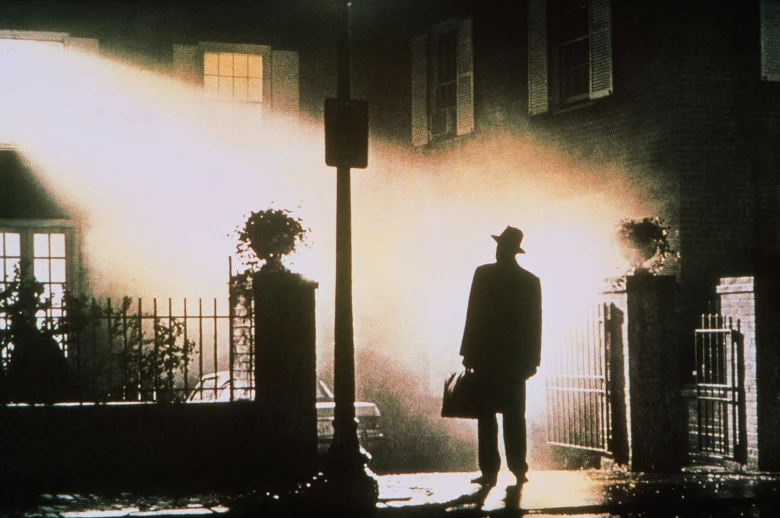
Of course, the battle between good and evil is a central theme in the novel The Exorcist by William Peter Blatty. The story is a classic tale of the struggle between God and the devil, as two priests, Father Karras and Father Merrin, are called upon to perform an exorcism on a young girl named Regan who has been possessed by a powerful demon.
Throughout the novel, the struggle between good and bad is played out in many different ways, from the physical battles between the priests and the demon to the internal struggles of the characters as they question their beliefs and try to make sense of the horrors they are witnessing.
One of the most powerful elements is in The Exorcist is the way that Blatty explores the moral ambiguity of his characters. For example, Father Karras is a flawed and deeply conflicted individual, who is struggling with his own beliefs and his own sense of morality. He is torn between his desire to save Regan and his fear of the evil that possesses her, and this internal struggle makes him a complex and compelling character.
Similarly, Father Merrin is a veteran exorcist who has seen much evil in his life, but who is also haunted by his own demons and his sense of guilt.
Through these characters, Blatty explores the idea that the struggle between good and evil is not always clear-cut, and that even the most devout and committed people can be pulled into the darkness.
The Exorcist also explores things on a more abstract and philosophical level, with Blatty asking questions about the nature of evil, the role of religion in the face of evil, and the limitations of human understanding.
Jaws
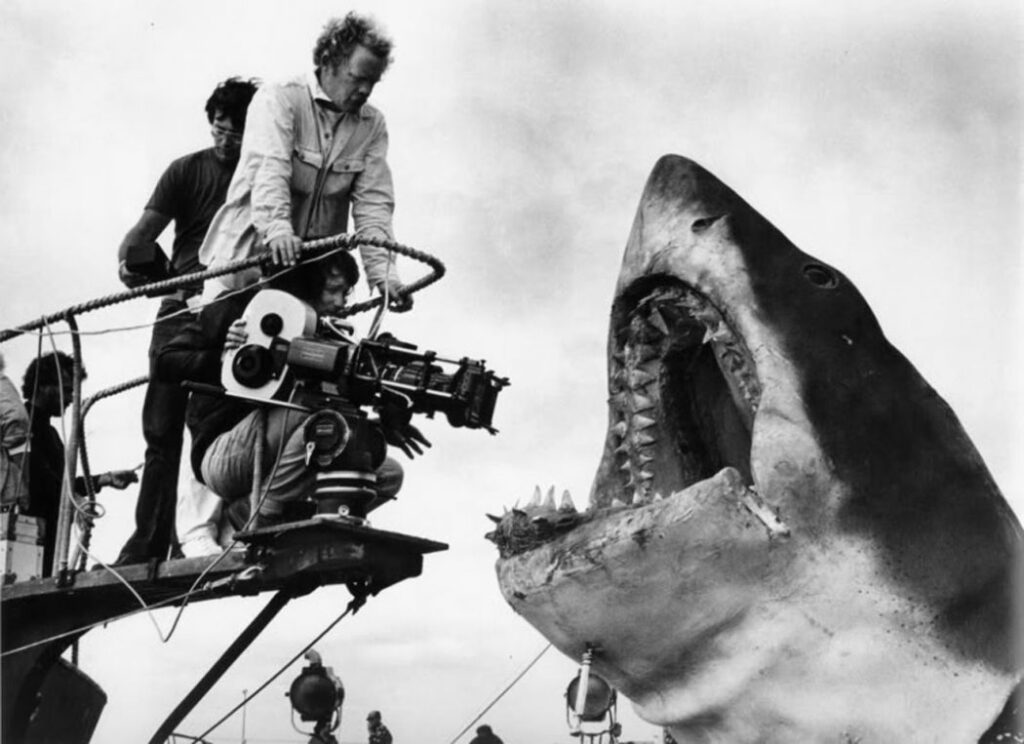
Jaws by Peter Benchley is a novel that explores the theme of good vs evil through its portrayal of a great white shark terrorizing the beaches of a small New England island. The shark is a ruthless and indiscriminate killer, and its attacks on innocent swimmers and boaters symbolize the dark forces of nature.
In contrast to the shark, the novel’s main human characters, including police chief Martin Brody, marine biologist Matt Hooper, and shark hunter Quint, represent the varied flawed forces of good. They come together to confront the shark and protect their community from its dangerous attacks. Throughout the novel, these characters are put to the test as they face their fears and work together to defeat the shark.
One of the key ways that Benchley explores the theme of good vs evil in Jaws is through the characterization of the shark. The shark is depicted as a powerful and relentless predator, with no regard for human life. This makes it a formidable and frightening opponent, and it serves as a symbol of the darker aspects of nature. At the same time, the shark is also portrayed as having a primal and instinctual drive, and its behaviour is not entirely evil.
Jaws also explores the theme of morality through its human characters. For example, the relationship between Brody and Hooper is one of the central conflicts in the novel, as they struggle to work together and overcome their differences. This conflict represents the struggle on a more personal level, as the characters must overcome their own weaknesses and biases to work together for the greater good.
Finally, Jaws also explores the battle between good and evil through the community of Amity Island. This is an ordered town which is torn between its desire to protect itself from the shark and its need to maintain its way of life. This struggle represents the larger struggle between good and evil, as the community must balance its desire for safety with its desire for prosperity.
The Omen
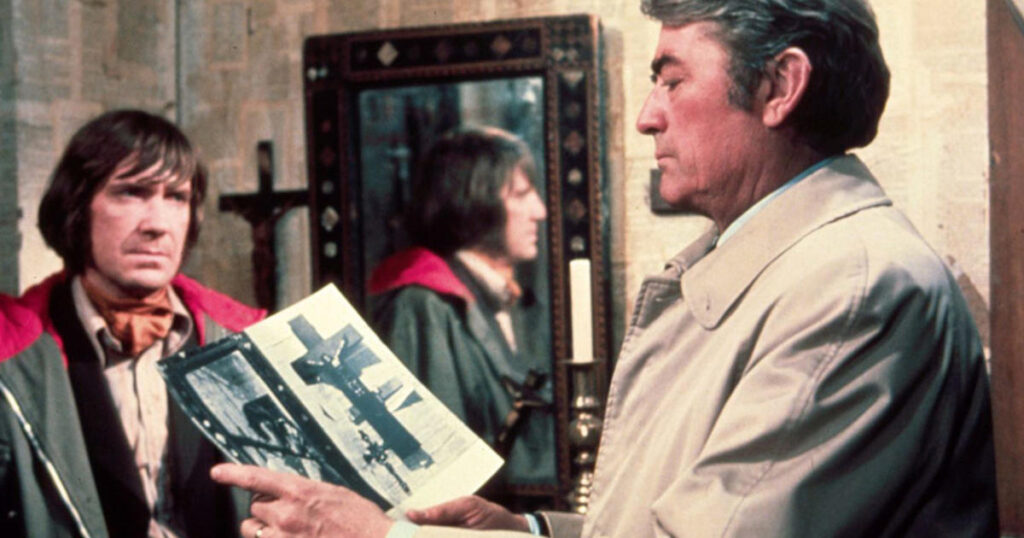
The Omen centres around the birth of Damien Thorn, who is revealed to be the Antichrist, and the efforts of those around him to stop him from fulfilling his destiny and bringing about the end of the world.
Throughout the novel, Damien is depicted as the embodiment of evil, with his actions and words showing his willingness to do whatever it takes to achieve his goals. At the same time, the novel’s other characters, including Robert Thorn, Damien’s adoptive father, and Father Brennan, a priest who recognizes Damien’s true nature, represent the forces of good as they work to stop Damien from fulfilling his evil destiny.
The conflict in The Omen is depicted as a struggle between the forces of heaven and hell, with Damien serving as the Antichrist, the chosen instrument of Satan. This cosmic battle is mirrored in the interactions between the human characters in the novel, as they struggle to overcome their biases to stop Damien.
Throughout the novel, Robert Thorn is faced with a series of difficult choices, as he tries to reconcile his love for Damien with his knowledge of the child’s true nature. These choices represent the idea that even in the face of evil, individuals have the power to choose their path and to fight against evil even when it seems insurmountable.
Gore vs Suspense: Which is Best for Your Horror Novel
Some readers may find gore to be more effective in evoking fear and creating a sense of horror, while others may prefer a more psychological approach with suspense and terror. However, it’s important to note that excessive gore can indeed desensitize the reader and lead to a decrease in the horror’s impact.
A well-written horror novel will often balance gore and suspense, using each to complement the other. For example, suspenseful scenes can build up tension and create a sense of anticipation, which can then be released with a graphic and frightening scene. Too much gore, on the other hand, can make the horror seem gratuitous and diminish its impact.
Ultimately, the best approach will vary depending on the individual story, but a balanced combination of gore, suspense, and terror is often the most effective in creating a haunting and memorable horror novel.
Types of Horror Novels
Here’s a list of some common subgenres of horror novels along with examples:
- Psychological Horror – It focuses on the mental and emotional state of characters, often exploring the dark aspects of the human psyche. Examples include: “The Silence of the Lambs” by Thomas Harris, and “Misery” by Stephen King.
- Gothic Horror – This subgenre is characterized by elements of mystery, death, and the supernatural. It often takes place in dark and foreboding settings, such as old castles or abandoned mansions. Examples include: “Dracula” by Bram Stoker, and “Frankenstein” by Mary Shelley.
- Survival Horror – The struggle of characters to survive against terrifying and deadly forces, often in isolated or confined settings can make a great horror novel. Examples include: “The Texas Chainsaw Massacre” by Kim Henkel, and “Alive” by Piers Paul Read.
- Haunted House Horror – The classic tale of a haunted house and the terror that ensues when characters encounter supernatural forces within its walls is about as timeless as it gets. Examples include: “The Amityville Horror” by Jay Anson, and “The Haunting of Hill House” by Shirley Jackson.
- Monster Horror – This subgenre features various terrifying monsters, such as vampires, werewolves, zombies, and other supernatural beings, that threaten the lives of characters. Examples include: “I Am Legend” by Richard Matheson, and “The Vampire Lestat” by Anne Rice.
- Slasher Horror – If you love gore and blood, then the tale of a violent and brutal killer who stalks and murders victims, often in graphic detail, should be right up your street. Examples include: “Halloween” by John Carpenter, and “Friday the 13th” by Victor Miller.
- Cosmic Horror – This explores the terror of the unknown and the cosmic forces beyond human comprehension. Examples include: “The Call of Cthulhu” by H.P. Lovecraft, and “The Thing” by John W. Campbell Jr.
- Body Horror – A smaller subgenre, this focuses on grotesque and horrific aspects of the human body, often featuring graphic depictions of mutilation and decay. Examples include: “The Fly” by George Langelaan, and “Cannibal Holocaust” by Ruggero Deodato.
- Supernatural Horror – This uses supernatural elements, such as ghosts, witches, and demonic forces, to create a feeling of fear and terror. Examples include: “The Exorcist” by William Peter Blatty, and “The Turn of the Screw” by Henry James.
- Eco-Horror – More apt today than ever before, this genre usually involves the frightening aspects of the natural world and our relationship with the environment. Examples include: “The Day of the Triffids” by John Wyndham, and “The Birds” by Daphne du Maurier.
- Splatterpunk – This is characterized by extreme violence, gore, and graphic descriptions of violence and death often in an alternative universe. Examples include: “Deadspace” by Michael Marshall Smith, and “American Psycho” by Bret Easton Ellis.
- Folk Horror – There’s a long history of folklore, legends, and myth that can be used to create a feeling of unease and terror. Examples include: “The Wicker Man” by Anthony Shaffer, and “The Witch” by Robert Eggers.
- Techno-Horror – When tech goes wrong! This sub-genre explores the frightening implications of technology and science. Examples include: “Jurassic Park” by Michael Crichton, and “The Terminator” by James Cameron.
- Urban Horror – Some of the most frightening horror stories of all time use city or urban environments and explore the dark side of city life, including crime, poverty, and other societal issues. Examples include: “The Walking Dead” by Robert Kirkman, and “World War Z” by Max Brooks.
- Horror-Comedy – Combining horror and comedy to create a unique and often humorous take on the horror genre can be dangerous. But when it works, it works. Examples include: “Shaun of the Dead” by Edgar Wright, and “An American Werewolf in London” by John Landis.
- Paranormal Horror – From haunted houses to ghosts, and other paranormal entities you can’t beat a good spooky story. Examples include: “The Haunting of Bly Manor” by Henry James, and “Poltergeist” by Steven Spielberg.
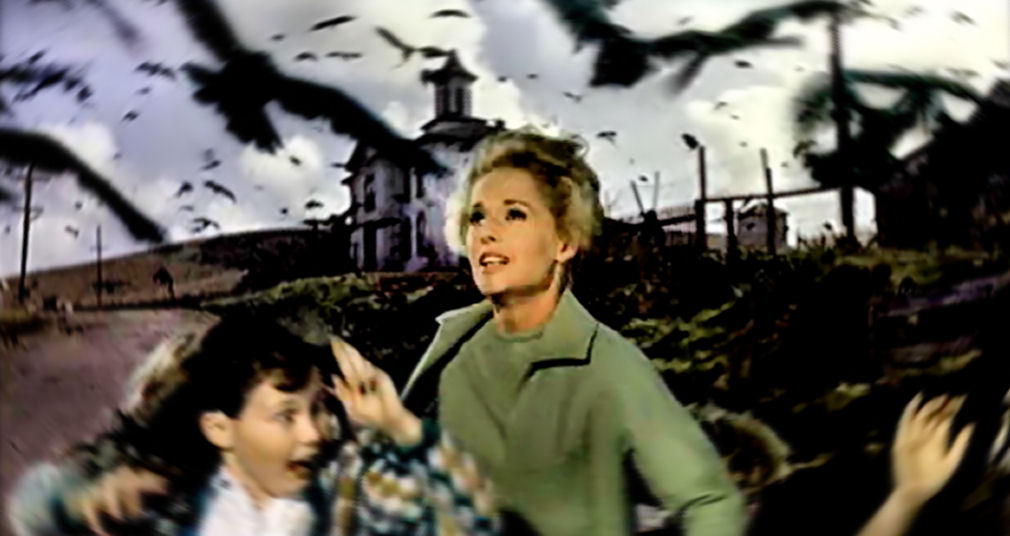
Creating Evil: Building a Bad Guy That Lives Long in the Memory
Everyone loves a good baddy and nowhere is this as important as in a horror novel. Whether it’s seen or unseen, getting this part of your story right is critical. Here are some tips for creating an effective and memorable evil protagonist for a horror novel:
- Develop a compelling backstory: Give your evil protagonist a rich and detailed backstory that explains why they are the way they are. This will help the reader understand the character and make them more relatable, even if they are monstrous.
- Make them charismatic: A charismatic villain is often more compelling than a one-dimensional monster. Give your evil protagonist qualities like charm, wit, or intelligence that make them interesting and memorable.
- Create a motivation: Give your evil protagonist a clear motivation for their actions, even if it is morally reprehensible. This will help the reader understand the character’s perspective and make their actions more believable.
- Show the consequences of their actions: Demonstrating the consequences of your evil protagonist’s actions can add depth to their character and increase the reader’s investment in the story.
- Avoid cliches: Try to avoid common cliches and archetypes when creating your bad guy. A unique and original character will stand out and make a greater impact on the reader.
- Use irony: Using irony can add depth to your evil protagonist and make their actions even more disturbing. For example, having a character who claims to be doing something for the greater good while committing horrific acts can be particularly unsettling.
A Closer Look at Some Baddies in Horror Fiction
“Dracula” by Bram Stoker is widely regarded as a classic of horror fiction, and the titular character of Count Dracula is considered one of the most memorable and compelling villains in literary history. There are several reasons why Dracula is such a great bad guy:
- Ambiguity: Dracula is a complex and multi-faceted character who defies easy classification as simply good or evil. He is both monster and charismatic seducer, making him a complex and intriguing figure.
- History and legend: The character of Dracula is based on the historical figure of Vlad the Impaler, a Romanian prince with a reputation for cruelty. This historical background, combined with the folklore surrounding vampires, gives the character a rich and fascinating history.
- Sexuality: The sexual undertones in “Dracula” are also a major part of what makes the character so compelling. Dracula’s seduction of his female victims is depicted as both irresistible and terrifying, adding a new layer of complexity.
- Psychological depth: Through his interactions with other characters, the reader is given a glimpse into Dracula’s mind and motivations. This psychological depth makes the character more believable and adds to the suspense of the story.
- Iconic status: Over the years, Dracula has become an iconic figure in popular culture, appearing in countless adaptations and reinterpretations. This has solidified his status as a classic character and made him a recognizable figure to many people.
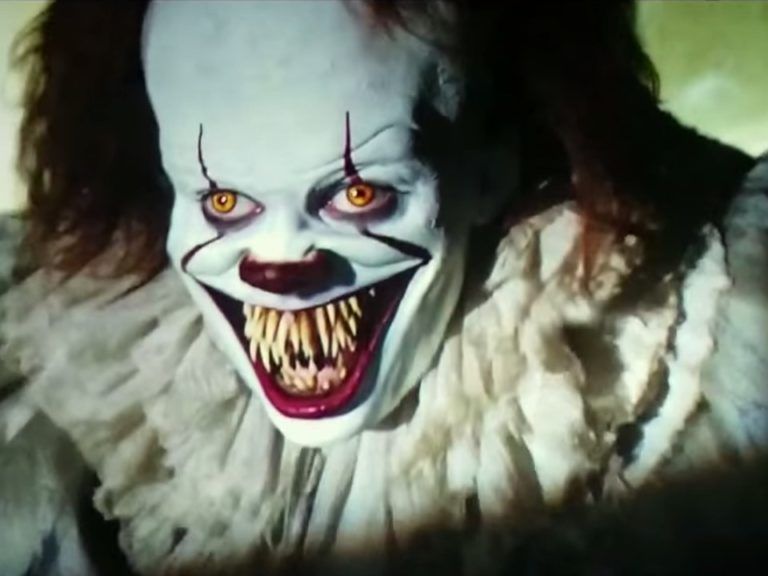
Pennywise the Dancing Clown has also become a memorable and compelling evil character since he first appeared in Stephen King’s novel “It.” Here are some reasons why:
- Shapeshifting abilities: Pennywise’s ability to shapeshift and take on different forms allows him to manipulate his victims and adapt to their deepest fears. This makes him a formidable and unpredictable antagonist.
- Timelessness: Pennywise is depicted as an ancient, malevolent entity that has been preying on the town of Derry for generations. This timeless quality gives the character a sense of immense power and danger that we only see the human face of.
- Childhood fears: The fact that Pennywise specifically targets and exploits children’s fears adds an extra layer of horror to the character. Children are often seen as vulnerable and innocent, making their suffering all the more poignant.
- Comedic aspect: Despite being a malevolent entity, Pennywise is often depicted as a clown, a figure that is traditionally associated with joy and laughter. This ironic twist adds to the character’s overall creepiness and makes him all the more unsettling.
- Psychological manipulation: Pennywise is depicted as being able to manipulate his victims not just physically, but mentally and emotionally. This ability to mess with people’s minds adds to the character’s malevolence and makes him a truly frightening and compelling evil character.
Patrick Bateman, the protagonist of Bret Easton Ellis’s more high-brow novel “American Psycho,” is a great baddie for several reasons:
- Wealth and status: Bateman is a wealthy, successful Wall Street banker, and the contrast between his outward success and his inner turmoil makes him both frightening and unfathomable.
- Psychological complexity: Bateman is depicted as being mentally unstable, with a fragmented and unreliable narrator, making it difficult to discern what is real and what is not. This psychological complexity adds to the character’s unpredictability and makes him all the more frightening.
- Amorality: Bateman seems completely devoid of empathy or moral scruples, a defining character of 80s when ‘greed’ was good. He is a cold, calculated killer who takes pleasure in the act of murder, making him a truly terrifying villain.
- Satire: The character of Patrick Bateman can also be seen as a satire of the superficial, materialistic, and morally bankrupt culture of the late-1980s Wall Street. This satirical aspect adds depth to the character and makes him a commentary on larger societal issues.
- The banality of evil: Bateman’s actions are depicted as being disturbingly mundane and routine, making him all the more frightening. This highlights the idea that evil can be banal and everyday, and that it can hide in plain sight.
As evil characters go, Hannibal Lecter is probably one of the most iconic creations in the last forty years of horror for several reasons:
- Intelligence and sophistication: Hannibal is depicted as being highly intelligent, cultured, and sophisticated, making him a fascinating and unpredictable character. He is often one step ahead of his pursuers, which adds to his sense of danger and makes him the perfect lovable bad guy.
- Duality: Despite being a cannibalistic serial killer, Hannibal is also depicted as being charming and charismatic, making him a complex and multi-faceted character. This duality between his charming exterior and his evil actions adds to his overall appeal and makes him all the more terrifying.
- Psychological depth: Hannibal’s motivations and thought processes are explored in depth, giving the reader a glimpse into his mind and making him a more believable and compelling character. This psychological depth adds to the suspense of the story and makes him a truly memorable villain.
- Cultural significance: Hannibal Lecter has become an iconic figure in popular culture and is widely regarded as one of the greatest villains in literary and film history. This cultural significance made him a recognizable and memorable character for many people once the novels transferred to film.
- Antagonism: Hannibal is often depicted as being in opposition to law enforcement and the justice system, making him a fascinating antagonist. His ability to outsmart and evade capture adds to his sense of danger and makes him a compelling and memorable villain.
Not all evil comes in human form, of course. The creature in John Carpenter’s film “The Thing” showcases how otherworldly, Lovecraftian concepts can capture the mind:
- Shape-shifting abilities: The creature’s ability to assimilate and imitate other life forms makes it a constantly evolving and unpredictable villain. This adds to the suspense of the story and makes it one of the more frightening monsters in modern horror fiction.
- Isolation: The setting of the film, an Antarctic research station, adds to the sense of isolation and vulnerability of the characters. There is no where for them to run. This makes the creature’s attacks all the more frightening.
- Unpredictability: The creature is completely alien and beyond human comprehension and, like the shark in Jaws, devoid of emotion. This makes it all the more frightening, as the characters and the audience have no way of knowing what it might do next.
- Paranoia: The creature’s ability to imitate other life forms leads to a sense of paranoia among the characters, as they begin to suspect each other of being assimilated. This ramps up the tension of the story as we try to figure out who has become the monster.
- Special effects: The creature’s special effects and practical makeup are still considered to be some of the best in the horror genre. Pre-CGI, the creature’s appearance and movements are both disturbing and realistic.
Resources for Horror Writers
There are many resources available for people who want to write horror novels and stories and improve their craft. Here are some of our top ideas:
- Books: There are many books on the market that provide guidance and advice for aspiring horror writers. Some of the best include Stephen King’s “On Writing: A Memoir of the Craft,” Nancy Kilpatrick’s “The Gothic Craft: A Guide to Writing Horror Fiction,” and Michael Collings’s “The Shape Under the Sheet: The Complete Stephen King Encyclopedia.” It’s important not to limit yourself to just works about horror writing, there are other great books out there that can give you ideas on character and plot development. Read them all!
- Writing workshops and courses: Participating in a writing workshop or course can be an excellent way to improve your writing skills and receive feedback from experienced writers and instructors. Many writing organizations and colleges offer workshops and courses in horror writing and a good few of these are online.
- Horror writing communities: Joining a horror writing community can be a great way to connect with other writers, share your work, and receive feedback. Online communities such as the Horror Writers Association, Reddit’s /r/horrorwriters, and social media groups are all great places to start. These are also good resources for finding beta readers for your novel.
- Horror novels and short stories: Reading horror fiction is an excellent way to learn more about the genre and get a sense of what makes a great horror story. Pay attention to how other writers create suspense, atmosphere, and character development, and try to incorporate these elements into your own work.
- Study of horror films and media: Watching horror films and other horror media, such as TV shows and comic books, can be an excellent way to gain a deeper understanding of the genre and its conventions. Pay attention to the elements that make these works successful and try to incorporate these elements into your own writing.
That’s it for our first part exploring horror fiction writing. As usual, add your comments below. Part 2 will be on the way soon.
